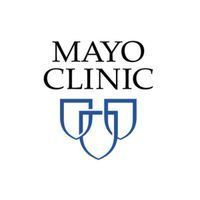
Mayo Clinic Neurology Taps Video Technology to Maintain Care During COVID-19

Mayo Clinic is in the forefront of changing practice techniques during the COVID-19 pandemic by using video appointments to reach patients.
Mayo Clinic
This content is courtesy of Mayo Clinic. To view the original post,
Interest in telehealth has grown rapidly during the COVID-19 pandemic as more people look for ways to maintain their health care while staying at home. Long before the COVID-19 pandemic, Mayo Clinic has been enhancing the
In today's increasingly digital world, everything from banking to shopping and getting a ride is at your fingertips. Mayo Clinic is working to make health care just as accessible and convenient.
"Mayo Clinic can go out to where our patients are digitally, rather than forcing the patients to come to our facilities if they don't need to be in our buildings for the care they're getting," says Steve Ommen, MD, medical director for Mayo Clinic's Center for Connected Care, which provides the infrastructure and tools to practice medicine in innovative ways.
One of the services being used to enhance patient care in this way is video appointments. This allows patients to stay at, or closer to, home while being treated for various conditions.
WATCH:
One patient benefitting from the use of video appointments is Dena Reese who has Parkinson disease. Reese is able to check in with her Mayo Clinic neurologist, Rodolfo Savica, MD, PhD, every few months without having to make the 1300-mile trip from her home in Texas to Rochester, Minnesota.
"We couldn't afford to come every three months to Minnesota since we're here in Texas, but it's like being right there with him," says Reese.
Much like he does for an in-person visit, Savica gets a page when Reese is connected and ready for her video appointment. With the help of her husband, who holds her phone, Dena is able to show Savica different movements and exercises so he can check her progress.
"It's wonderful, wonderful," says Reese. "I was having issues with my mouth twitching and within one minute of talking to Savica, he said, 'You're on too much medication.' So we changed it, and it got so much better."
Ommen says Connected Care provides the opportunity to match the intensity of care delivery to the intensity of the need.
"Patients that need to have a fancy CT scan or to do top-end surgeon do a procedure need to be here to get those things done," Ommen explains. "Many patients don't need that, and with our ability to connect imaging studies remotely, to see patients remotely, to get data from them, allows us to make care much more convenient for them and much more affordable for them."
Other ways Mayo Clinic is bringing health care to the patient is through eConsults, rather than phone or face-to-face meetings. Ommen describes it as the medical version of texting but in an official and secure way. eConsults allow a Mayo Clinic specialist to answer a provider's focused question about diagnosis, therapy or management on a patient.
Another way is through tele-emergency video visits, which provide emergency care to patients in rural settings when Mayo Clinic specialists can't physically be there.
Newsletter
Keep your finger on the pulse of neurology—subscribe to NeurologyLive for expert interviews, new data, and breakthrough treatment updates.































